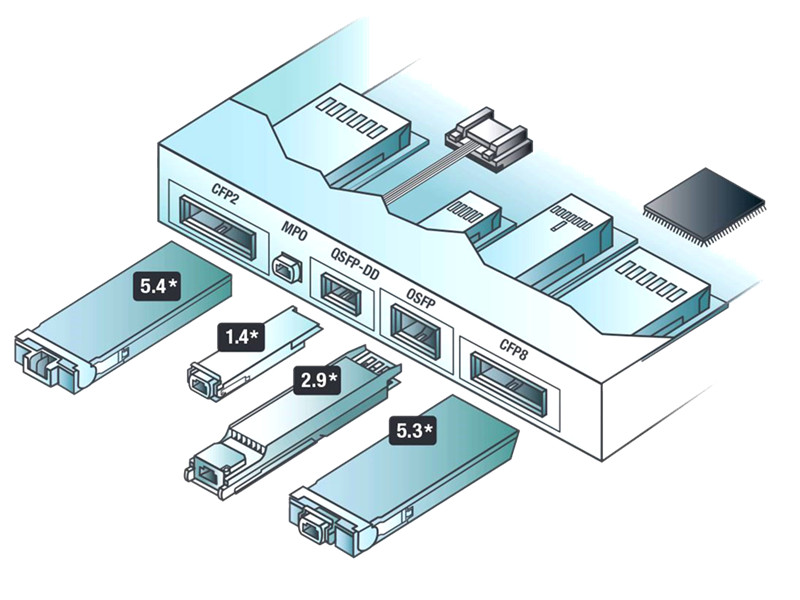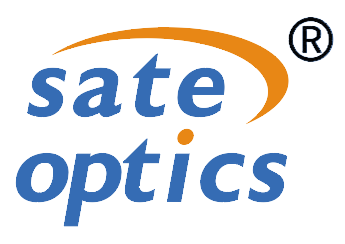How Many 400G Transceiver Types Are in the Market?
2023-04-03 11:31:44
How Many 400G Transceiver Types Are in the Market?
With the tremendous requirement for high bandwidth in 5G, loT and cloud data center, the focus of 400G Ethernet has been lasting for a couple of years. Vendors such as Cisco, Arista, and juniper are developing and testing technologies for 400G Ethernet networks. As the key hardware devices for interconnecting optical networks, there is no dispute that 400G transceiver will become the mainstream of the industry. Still curious about 400G transceivers? This paper will give you a comprehensive introduction to the different 400G transceiver types of different characteristics including applications, interface standards, and form factors.
Transceiver Application
According to the transceiver application, optical modules can be classified into two categories: client-side transceivers and line-side transceivers.
400G Ethernet Transceivers for Client Side Transmission
Client-side transceivers are used to interconnect between the metro networks and the optical backbone. The term "client side" refers to relatively short distances compared with the line side, generally from 50m to 10km and with only one transceiver connected to fiber thus no coherent optics is needed. There are various transceiver interfaces that have been standardized by IEEE and MSA. Most importantly, it has an agreed and standardized interface that is used for the network connection. PAM4 has been chosen by IEEE 802.3bs for 400GE client side transmission.
400G Coherent Transceivers for Line Side Transmission
Different from client side, line side reaches transmission distances of 80km or even longer using DWDM. Coherent technology is expected to implement 400G line side transmission. OIF has been working on standardizing the 400G coherent DWDM interface for DCI and other metro/access applications. The signal processing of coherent transport is much greater than that of short reach PAM4 data center transmission, which requires more DSPs and power than in client side transmission.
Interface Standard
The transceiver interfaces are defined by the interface standards. The following chart lists the common 400G Ethernet standards and the corresponding interfaces.
| Interface standard | Interface | Link Distance | Media Type | Optical Architecture |
|---|---|---|---|---|
| IEEE 802.3bs | 400GBASE-SR16 | 100m | MMF | 16× 25G NRZ 850nm |
| 400GBASE-DR4 | 500m | SMF | 4× 100G PAM4 1300nm | |
| 400GBASE-FR8 | 2km | SMF | 8× 50G PAM4 WDM | |
| 400GBASE-LR8 | 10km | SMF | 8× 50G PAM4 WDM | |
| IEEE P802.3cm | 400GBASE-SR8 | 100m | MMF | 8× 50G PAM4 850nm |
| 400GBASE-SR4.2 | 100m | MMF | 8× 50G PAM4 BiDi 850/910nm | |
| IEEE P802.3cn | 400GBASE-ER8 | 40km | SMF | 8× 50G PAM4 WDM |
| IEEE P802.3ct | 400GBASE-ZR | 80km | SMF | Coherent DWDM |
| 100G Lambda MSA | 400GBASE-FR4 | 2km | SMF | 4× 100G PAM4 CWDM |
| 400GBASE-LR4 | 10km | SMF | 4× 100G PAM4 CWDM | |
| CWDM8 MSA | 400G-CWDM8-2 | 2m to 2km | SMF | 8× 50G CWDM |
| 400G-CWDM8-10 | 2m to 10km | SMF | 8× 50G CWDM |
Note: 400GBASE-SR16 has not been released by any transceiver vendors. As 400GBASE-SR16 interface requires a high fiber count (32 fibers per duplex link), this standard is not expected to enter the 400G transceiver market.
400G Transceiver Form Factor
There are several mainstream 400G form factors,400G QSFP-DD, OSFP, CFP8, COBO, etc., some of which have been put in the market and some are still as a design.
CFP8 is the first generation 400G transceiver, with a relatively large physical size, offering the lowest port density.
COBO is named for Consortium for On-Board Optics, installed internally to the line-card equipment in a controlled environment, thus lacking flexibility.
OSFP stands for Octal Small Form Factor Pluggable, which is a new kind of pluggable form factor. There are some companies that have already sold 400G OSFP transceivers on the website.
400G QSFP-DD transceivers are now one of the most popular optical modules in the market, which have been launched and manufactured by Finisar, Innolight, etc.

The table below includes detailed comparisons of size, compatibility, power, etc. for the three main form factors: OSFP, QSFP-DD and CFP8.
| OSFP | QSFP-DD | CFP8 | |
|---|---|---|---|
| Application Scenario | Data center & telecom | Data center | Telecom |
| Size | 22.58mm× 107.8mm× 13mm | 18.35mm× 89.4mm× 8.5mm | 40mm× 102mm× 9.5mm |
| Max Power Consumption | 15W | 12W | 24W |
| Backward Compatibility with QSFP28 | Through adapter | Yes | No |
| Electrical signaling (Gbps) | 8× 50G | 8× 50G | 8× 50G |
| Switch Port Density (1RU) | 36 | 36 | 16 |
| Media Type | MMF & SMF | MMF & SMF | MMF & SMF |
| Hot Pluggable | Yes | Yes | Yes |
| Thermal Management | Direct | Indirect | Indirect |
| Support 800G | Yes | No | No |
Among these three transceiver form factors, it is obvious CFP8 lacks density, unlike the other two 400G transceivers. OSFP modules have been designed with 800G in mind. The QSFP-DD form factor has the main advantages of its high density, small size, and back forward compatibility that it supports QSFP28 enabling easier migration to 400G Ethernet, which addresses the industry need for high speed and high-density networking. Therefore it is expected that QSFP-DD form factor will become the most appropriate form factor for the 400G Ethernet applications.
Summary
Apart from the above categories of 400G transceivers, fiber mode, wavelength, etc. are also the common characteristics that are used in optical transceiver classification, which are not further explained. The demand for high-speed data transmission is rocketing. As the transceiver market is pushed to shift, we can expect the 400G Ethernet deployment in the next-generation data centers and the popularity of 400G optical transceivers in the near future.
Previous:What is the 400G Optical Module?
Next:400G ZR & ZR+ - New Generation of Solutions for Longer-reach Optical Communications


